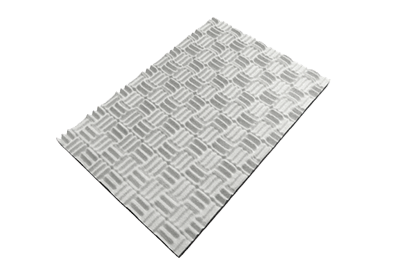What Is a Sound-Absorbing Material?

A sound-absorbing material is designed to absorb sound, thereby reducing sound reflection. Unlike sound-insulating materials that reflect sound to prevent its transmission, sound-absorbing materials are typically porous, allowing air and sound to penetrate easily.
These materials come in various forms to suit different uses and shapes. Plate-shaped materials are referred to as sound-absorbing plates, thicker versions are known as laminated sound-absorbing plates, triangular ones as sound-absorbing wedges, and block-shaped varieties as sound-absorbing blocks.
Glass wool, rock wool, porous urethane, and polyester fiber are common sound-absorbing materials. In construction, glass wool and rock wool, which are noncombustible, are often used. These materials are inherently sound absorbing, but fiber-based materials may scatter easily. Therefore, a breathable fabric is sometimes attached to their surface, serving as a protective layer that also adds design elements.
Uses of Sound Absorbing Materials
Sound-absorbing materials are utilized in the interior walls and ceilings of music studios, halls, movie theaters, factories, offices, and acoustic measurement rooms. They serve two primary purposes: noise control by reducing echoes and sound field adjustment.
1. Noise Control
Without sound absorption treatment, walls and ceilings reflect sound, amplifying noise through reverberation. For instance, the operating sound of a pump in a room with a concrete ceiling echoes off the hard surface, creating excessive noise. Applying sound-absorbing materials can suppress these reverberations.
2. Sound Field Adjustment
This involves modifying how sound is perceived in a space. Since sound exists across a broad frequency range, its propagation varies with frequency. In a concert hall, sound-absorbing materials may be applied to areas where low-frequency sounds are muffled, ensuring clarity. In recording studios, creating a ‘dead space’ with sound-absorbing materials allows for the recording of dry sound sources.
Principle and Performance of Sound Absorption
Sound absorption involves converting sound energy into heat and other forms of energy. The efficacy of sound-absorbing materials is measured by their sound absorption coefficient. A higher coefficient indicates better performance. This coefficient is primarily determined through the vertical incidence method or the reverberation room method. It’s important to compare the coefficients obtained by the same measurement method, as data from the vertical incidence and reverberation room methods can differ.